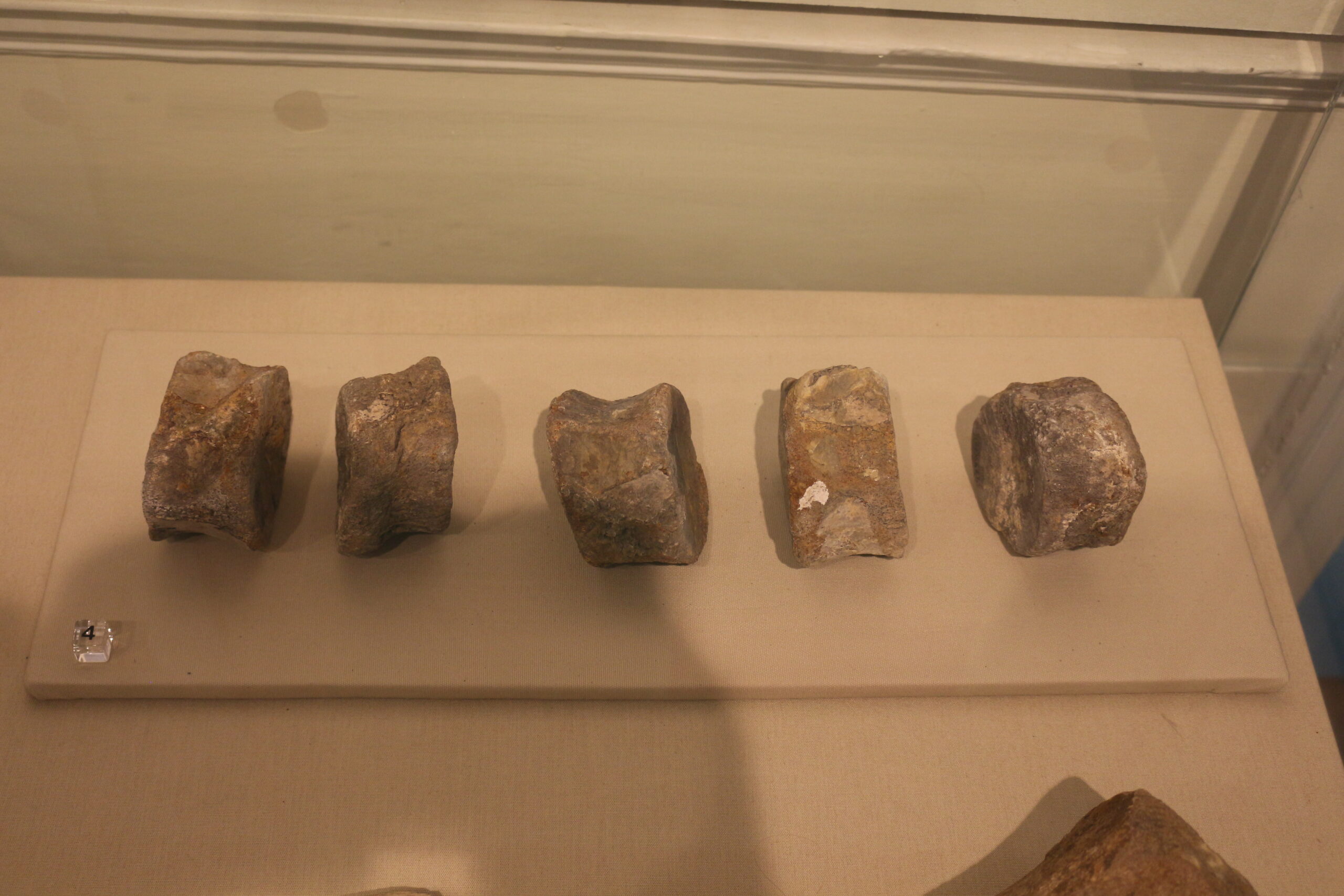These 5 Fossilised Plesiosaur vertebrae, found at the Kimmeridge Clay, are from the Jurassic period. They were found in the Great Western Railway Works, Swindon, Wiltshire, collection date 1888, part of the William Cunnington III fossil collection.
Plesiosaur, any of a group of long-necked marine reptiles found as fossils from the Late Triassic Period into the Late Cretaceous Period (215 million to 80 million years ago). Plesiosaurs had a wide distribution in European seas and around the Pacific Ocean, including Australia, North America, and Asia. Some forms known from North America and elsewhere persisted until near the end of the Cretaceous Period (65.5 million years ago).
Early in their evolutionary history, the plesiosaurs split into two main lineages*: the pliosaurs (or pliosauroids), in which the neck was short and the head elongated; and the plesiosauroids (or plesiosauroidea), in which the head remained relatively small and the neck assumed snakelike proportions. The late evolution of plesiosaurs was marked by a great increase in size. The world-renowned fossil finder Mary Anning was first to find the first complete skeleton of Plesiosaurus, in December 1823.
Plesiosaurs were not good at hearing successfully; we can tell by the few stapeses found in fossils. An olfactory system** has been suggested as a common adaptation in the Plesiosauria. The internal nostrils have palatal grooves to channel water into them, the flow of which would be maintained by hydrodynamic pressure over the posteriorly placed external nares (nostrils) during locomotion. During its passage through the nasal ducts, the water would have been ‘tasted’.
The extremely long necks of plesiosaurs have caused speculation as to their function from the very moment their special build became apparent. Conybeare*** had offered three possible explanations. The neck could have served to intercept fast-moving fish in a pursuit. Alternatively, plesiosaurs could have rested on the sea bottom, while the head was sent out to search for prey, which seemed to be confirmed by the fact the eyes were directed relatively upwards. Finally, Conybeare suggested the possibility that plesiosaurs swam on the surface, letting their necks plunge downwards to seek food at lower levels. All these interpretations assumed that the neck was very flexible. The modern insight that the neck was, in fact, rather rigid, with limited vertical movement, has necessitated new explanations. One thought is that the length of the neck made it possible to surprise schools of fish, the head arriving before the sight or pressure wave of the trunk could alert them. Plesiosaurs hunted visually, as shown by their large eyes.
*An evolutionary lineage is a temporal series of organisms, populations, cells, or genes connected by a continuous line of descent from ancestor to descendant
**The olfactory system is the sensory system used for olfaction or the sense of smell
***Conybeare was an English geologist, paleontologist and clergyman.
Written by Joe Moore, DofE Student


